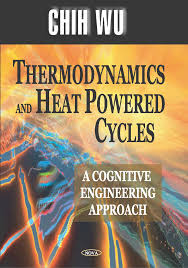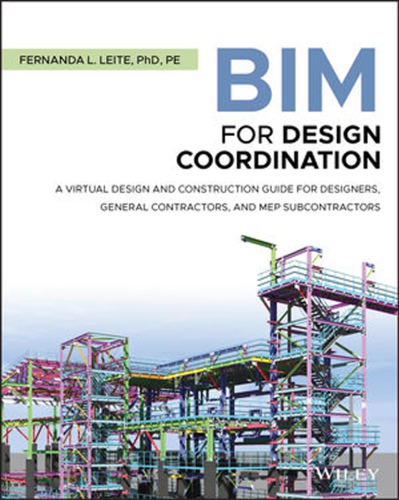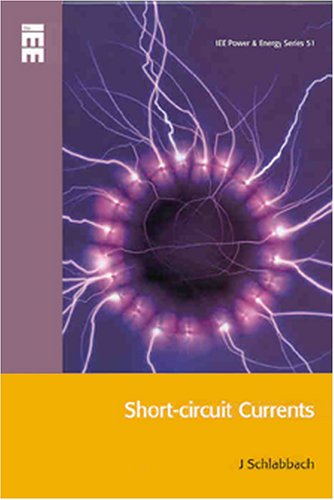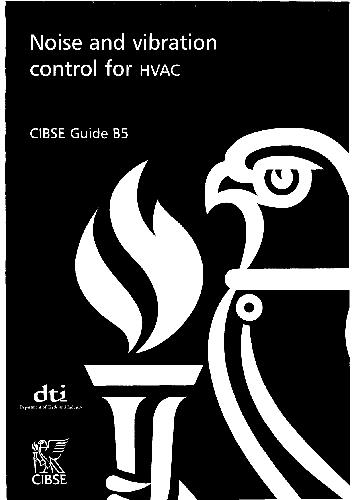| Book Name: | [PDF] Thermodynamics and Heat Powered Cycles |
| Category: | Thermodynamics |
| Free Download: | Available |
Thermodynamics and Heat Powered Cycles

thermodynamics and heat powered cycles a cognitive engineering approach
Authors: Chih Wu (U S Naval Academy, Annapolis, MD)
Book Description:
Due to the rapid advances in computer technology, intelligent computer software and multimedia have become essential parts of engineering education. Software integration with various media such as graphics, sound, video and animation is providing efficient tools for teaching and learning. A modern textbook should contain both the basic theory and principles, along with an updated pedagogy. Often traditional engineering thermodynamics courses are devoted only to analysis, with the expectation that students will be introduced later to relevant design considerations and concepts. Cycle analysis is logically and traditionally the focus of applied thermodynamics. Type and quantity are constrained, however, by the computational efforts required. The ability for students to approach realistic complexity is limited. Even analyses based upon grossly simplified cycle models can be computationally taxing, with limited educational benefits. Computerised look-up tables reduce computational labour somewhat, but modelling cycles with many interactive loops can lie well outside the limits of student and faculty time budgets. The need for more design content in thermodynamics books is well documented by industry and educational oversight bodies such as ABET (Accreditation Board for Engineering and Technology). Today, thermodynamic systems and cycles are fertile ground for engineering design. For example, niches exist for innovative power generation systems due to deregulation, co-generation, unstable fuel costs and concern for global warming. Professor Kenneth Forbus of the computer science and education department at Northwestern University has developed ideal intelligent computer software for thermodynamic students called CyclePad. CyclePad is a cognitive engineering software. It creates a virtual laboratory where students can efficiently learn the concepts of thermodynamics, and allows systems to be analyzed and designed in a simulated, interactive computer aided design environment. The software guides students through a design process and is able to provide explanations for results and to coach students in improving designs. Like a professor or senior engineer, CyclePad knows the laws of thermodynamics and how to apply them. If the user makes an error in design, the program is able to remind the user of essential principles or design steps that may have been overlooked. If more help is needed, the program can provide a documented, case study that recounts how engineers have resolved similar problems in real life situations. CyclePad eliminates the tedium of learning to apply thermodynamics, and relates what the user sees on the computer screen to the design of actual systems. This integrated, engineering textbook is the result of fourteen semesters of CyclePad usage and evaluation of a course designed to exploit the power of the software, and to chart a path that truly integrates the computer with education. The primary aim is to give students a thorough grounding in both the theory and practice of thermodynamics. The coverage is compact without sacrificing necessary theoretical rigor. Emphasis throughout is on the applications of the theory to actual processes and power cycles. This book will help educators in their effort to enhance education through the effective use of intelligent computer software and computer assisted course work.
Buy PaperBook:Thermodynamics And Heat Powered Cycles: A Cognitive Engineering Approach
Table of Contents:
Preface
Acknowledgements
Chapter 1 – BASIC CONCEPTS; pp. 1-29
1.1 – Thermodynamics
1.2 – Basic laws
1.3 – Why study thermodynamics
1.4 – Dimensions and units
1.5 – Systems
1.6 – Properties of a system
1.7 – Equilibrium state
1.8 – Processes and cycles
1.9 – CyclePad
1.10 – Summary
Chapter 2 – PROPERTIES OF THERMODYNAMIC SUBSTANCES; pp. 31-70
2.1 – Thermodynamic substances
2.2 – Pure substances
2.3 – Ideal gases
2.4 – Real gas
2.5 – Liquids and solids
2.5 – Summary
Chapter 3 – FIRST LAW OF THERMODYNAMICS FOR CLOSED SYSTEMS;
pp. 71-108
3.1 – Introduction
3.2 – Work
3.3 – Heat
3.4 – First law of thermodynamics for closed systems
3.5 – First law of thermodynamics for closed systems apply to cycles CyclePad closed system devices and processes
3.6 – Various processes for closed systems
3.7 – Multi-process for closed systems
3.8 – Summary
Chapter 4 – FIRST LAW OF THERMODYNAMICS FOR OPEN SYSTEMS;
pp. 109-156
4.1 – Introduction
4.2 – Conservation of mass
4.3 – First law of thermodynamics for open systems
4.4 – Various processes and devices for open systems
4.5 – Other devices (unable to use CyclePad)
4.6 – Multi-process and multi-device for open systems
4.7 – Summary
Chapter 5 – SECOND LAW OF THERMODYNAMICS; pp. 157-178
5.1 – Introduction
5.2 – Definitions
5.3 – Second law statements
5.4 – Reversible and irreversible processes
5.5 – Carnot cycle
5.6 – Carnot corollaries
5.7 – Thermodynamic temperature scale
5.8 – Summary
Chapter 6 – ENTROPY; pp. 179-226
6.1 – Clausius inequality
6.2 – Entropy and heat
6.3 – Heat and work as areas
6.4 – Entropy and Carnot cycles
6.5 – Second law of thermodynamics
6.6 – Second law of thermodynamics for open systems
6.7 – Property relationships
6.8 – Isentropic processes
6.9 – Isentropic efficiency
6.10 – Entropy change of irreversible processes
6.11 – The increase of entropy principle
6.12 – Second law efficiency and effectiveness of cycles
6.13 – Available and unavailable energy
6.14 – Summary
Chapter 7 – EXERGY AND IRREVERSIBILITY; pp. 227-268
7.1 – Introduction
7.2 – Reversible and irreversible work
7.3 – Reversible work of a closed system
7.4 – Reversible work of an open system
7.5 – Reversible work of an open system in a steady flow process
7.6 – Irreversibility of a closed system
7.7 – Irreversibility of an open system
7.8 – Exergy (Availability)
7.9 – Exergy of a heat reservoir
7.10 – Exergy and exergy change of a closed system
7.11 – Exergy of a flow stream and flow exergy change of an open system
7.12 – The decrease of exergy principle
7.13 – Exergy effectiveness of devices
7.14 – Exergy cycle efficiency
7.15 – Summary
Chapter 8 – VAPOR CYCLES; pp. 269-354
8.1 – Carnot vapor cycle
8.2 – Basic Rankine cycle
8.3 – Improvements to Rankine cycle
8.4 – Actual Rankine cycle
8.5 – Reheat Rankine cycle
8.6 – Regenerative Rankine cycle
8.7 – Low temperature Rankine cycle
8.8 – Solar heat engine
8.9 – Geothermal heat engine
8.10 – OTEC (Ocean thermal energy conversion)
8.11 – Solar pond
8.12 – Waste heat engine
8.13 – Vapor cycle working fluids
8.14 – Kalina vapor cycle
8.15 – Non-azetropic mixture Rankine cycle
8.16 – Super-critical cycle
8.17 – Design examples
8.18 – Summary
Chapter 9 – GAS CLOSED SYSTEM CYCLES; pp. 355-424
9.1 – Otto cycle
9.2 – Diesel cycle
9.3 – Atkinson cycle
9.4 – Dual cycle
9.5 – Lenoir cycle
9.6 – Stirling cycle
9.7 – Miller cycle
9.8 – Wicks cycle
9.9 – Rallis cycle
9.10 – Design examples
9.11 – Summary
Chapter 10 – GAS OPEN SYSTEM CYCLES; pp. 425-480
10.1 – Brayton or Joule cycle
10.2 – Split-shaft gas turbine cycle
10.3 – Improvement to Brayton cycle
10.4 – Reheat and intercool Brayton cycle
10.5 – Regenerative Brayton cycle
10.6 – Bleed air Brayton cycle
10.7 – Feher cycle
10.8 – Ericsson cycle
10.9 – Braysson cycle
10.10 – Steam injection gas turbine cycle
10.11 – Field cycle
10.12 – Wicks cycle
10.13 – Ice cycle
10.14 – Design examples
10.15 – Summary
Chapter 11 – COMBINED CYCLE AND COGENERATION; pp. 481-528
11.1 – Combined cycle
11.2 – Triple cycle in series
11.3 – Triple cycle in parallel
11.4 – Cascaded cycle
11.5 – Brayton/Rankine combined cycle
11.6 – Brayton/Brayton combined cycle
11.7 – Rankine/Rankine combined cycle
11.8 – Field cycle
11.9 – Cogeneration
11.10 – Design examples
11.11 – Summary
Chapter 12 – REFRIGERATION AND HEAT PUMP OPEN SYSTEM CYCLES;
pp. 529-586
12.1 – Carnot refrigeration and heat pump cycle
12.2 – Basic vapor refrigeration cycle
12.3 – Actual vapor refrigeration cycle
12.4 – Basic vapor heat pump cycle
12.5 – Actual vapor heat pump cycle
12.6 – Refrigerants
12.7 – Cascade and multi-stage vapor refrigeration cycles
12.8 – Domestic refrigerator-freezer and air conditioning-heat pump systems
12.9 – Absorption air-conditioning
12.10 – Brayton gas refrigeration cycle
12.11 – Stirling refrigeration cycle
12.12 – Ericsson refrigeration cycle
12.13 – Liquefaction of gases
12.14 – Non-azeotropic mixture refrigeration cycle
12.15 – Design examples
12.16 – Summary
Chapter 13 – FINITE-TIME THERMODYNAMICS; pp. 587-650
13.1 – Introduction
13.2 – Heat transfer
13.3 – Heat exchanger
13.4 – Curzon and Ahlborn (Endoreversible Carnot) cycle
13.5 – Curzon and Ahlborn cycle with finite heat capacity heat source and sink
13.6 – Finite time Rankine cycle with infinitely large heat reservoirs
13.7 – Actual Rankine cycle with infinitely large heat reservoirs
13.8 – Ideal Rankine cycle with finite capacity heat reservoirs
13.9 – Actual Rankine cycle with finite capacity heat reservoirs
13.10 – Finite time Brayton cycle
13.11 – Actual Brayton finite time cycle
13.12 – Other finite time cycles
13.13 – Summary
Thermodynamics And Heat Powered Cycles: A Cognitive Engineering Approach PDF
Author(s): Chih Wu
Year: 2007
ISBN: 1600210341,9781600210341,9781606926260
Related Results : Thermodynamics and Heat Powered Cycles,thermodynamics and heat powered cycles a cognitive engineering approach,thermodynamics and heat powered cycles a cognitive engineering approach by chih wu,thermodynamics and heat powered cycles a cognitive engineering approach pdf,thermodynamics and heat powered cycles a cognitive engineering approach solutionsthermodynamics and heat powered cycles pdf,
Related More Books
See More POST On : Engineering Books









![[PDF] Draw Buildings and Cities in 15 Minutes Draw Buildings and Cities in 15 Minutes pdf](https://www.freepdfbook.com/wp-content/uploads/2021/06/Draw-Buildings-and-Cities-in-15-Minutes-218x150.jpg)








![[PDF] Digital Image Processing An Algorithmic Introduction Using Java Digital Image Processing An Algorithmic Introduction Using Java](https://www.freepdfbook.com/wp-content/uploads/2022/06/Digital-Image-Processing-An-Algorithmic-Introduction-Using-Java.jpg)




![[PDF] 43 Years JEE ADVANCED + JEE MAIN Chapterwise & Topicwise Solved Papers 43 Years JEE ADVANCED (1978-2020) + JEE MAIN Chapterwise & Topicwise Solved Papers Physics PDF](https://www.freepdfbook.com/wp-content/uploads/2022/03/43-Years-JEE-ADVANCED-1978-2020.jpg)

![[PDF] Problems in Physical Chemistry for JEE (Main & Advanced) Problems in Physical Chemistry for JEE (Main & Advanced) Free PDF Book Download](https://www.freepdfbook.com/wp-content/uploads/2022/03/Problems-in-Physical-Chemistry-for-JEE-Main-Advanced.jpg)
![[PDF] Engineering Physics (McGraw Hill)](https://www.freepdfbook.com/wp-content/uploads/2021/05/bafc8c2685bb6823a9c56134f7fba5df.jpeg)

![[PDF] Engineering Chemistry By Shashi Chawla](https://www.freepdfbook.com/wp-content/uploads/2022/05/Theory-And-Practicals-of-Engineering-Chemistry-By-Shashi-Chawla-free-pdf-book.jpeg)
![[PDF] Chemistry: An Introduction to Organic, Inorganic & Physical Chemistry Chemistry: An Introduction to Organic, Inorganic & Physical Chemistry](https://www.freepdfbook.com/wp-content/uploads/2022/04/Chemistry-An-Introduction-to-Organic-Inorganic-Physical-Chemistry.jpg)
![[PDF] Essentials of Physical Chemistry Essentials of Physical Chemistry Free PDF Book by Bahl](https://www.freepdfbook.com/wp-content/uploads/2022/04/Essentials-of-Physical-Chemistry-bahl.jpg)
![[PDF] Biological control of plant-parasitic nematodes: soil ecosystem management in sustainable agriculture Biological control of plant-parasitic nematodes: soil ecosystem management in sustainable agriculture](https://www.freepdfbook.com/wp-content/uploads/2022/05/Biological-control-of-plant-parasitic-nematodes-soil-ecosystem-management-in-sustainable-agriculture.jpg)
![[PDF] Human Anatomy: Color Atlas and Textbook Human Anatomy: Color Atlas and Textbook Free PDF Book](https://www.freepdfbook.com/wp-content/uploads/2022/05/Human-Anatomy-Color-Atlas-and-Textbook.jpg)
![[PDF] Concepts of Biology Book [Free Download]](https://www.freepdfbook.com/wp-content/uploads/2022/05/Concepts-of-Biology.jpg)
![[PDF] Essentials of Biology [Free Download] Essentials of Biology Free PDF BOok Download](https://www.freepdfbook.com/wp-content/uploads/2022/05/Essentials-of-Biology-Free-PDF-Book-Downlaod.jpg)
![[PDF] Human Biology Book [Free Download]](https://www.freepdfbook.com/wp-content/uploads/2022/05/PDF-Human-Biology-Book-Free-Download.jpg)


